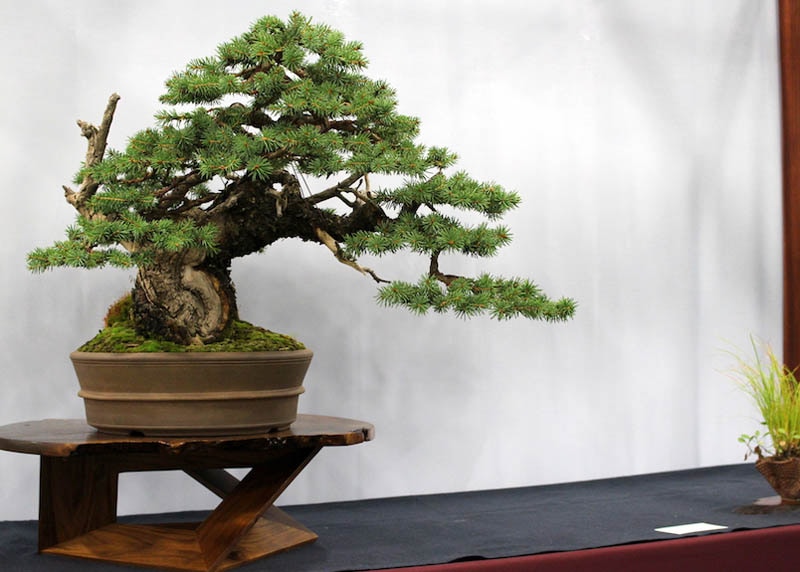Spruce Bonsai Care guidelines
The spruce needs a place in full sun during the growing season. In winter it should be placed in semi-shade and frost protection is recommendable when the tree is planted in a bonsai pot, because frozen roots can't provide water while the evergreen foliage continues to transpire and can desiccate.
Water the spruce thoroughly as soon as the soil gets dry, but don't keep the roots soaking wet all the time. In winter water less but never let the rootball dry out completely. Continue reading about watering Bonsai trees.
Watering
Free lecture from the Beginners CourseApply solid organic fertilizer every four weeks or use a liquid fertilizer every week during the growing season. Spruces also benefit from leaf feeding which makes a nice dark green leaf color. You can use a good liquid fertilizer with chelates and iron for spraying it over the foliage.
Due to the whorled growth there are always several branches growing at the same height on the trunk. Especially in the lower half of the bonsai tree you should keep only one branch of a whorl. Pinch new shoots in spring when they are still soft. If you want to prune back long branches, shorten them to smaller twigs near the trunk. Remember that the spruce will not backbud from old wood, so always leave needles and buds on a branch you want to keep. Continue reading about pruning Bonsai trees.
The spruce has very supple branches. They can easily be bent without snapping or cracking. In their natural habitat loads of snow fall on the trees and bend their branches downward. When the snow thaws, the branches come up again. For bonsai styling this means that thinner branches can be bent and twisted in any direction, but wired branches often take years to keep their new position. Repeated rewiring is necessary in most cases. Don't wire spruce trees in midsummer because dieback can occur at that time. Better style spruces in late summer or early spring.
Repot the spruce every two to four years, very old specimens can wait even longer. Prune the roots of a spruce only slightly, especially old trees will not tolerate loosing larger roots. Use a well-draining soil mix with structurally stable grains. Spruces are not demanding on the pH value of soil and water. Continue reading about repotting Bonsai trees.
The spruce can be propagated from seed and cuttings. Cuttings can be taken in late summer.
Green spruce aphids, spruce spider mites, gall adelgids, spruce needle miners, spruce budworms, diverse caterpillars and several fungal diseases like rust or needlecast can harm the spruce. Use a specific pesticide and in severe cases ask a professional gardener for help. For more detailed information on these techniques, check out our Bonsai tree care section.

Spruce bonsai tree

Foiliage of the Spruce

Picea bonsai on a rock at the Taikan Ten

Colorado Blue Spruce bonsai

Picea pungens bonsai
General information about the Spruce Bonsai tree
The Spruce grows needle-shaped leaves that are four-sided and attached singly to the branches. They stay on the tree for 4 to 10 years. The cones hang downwards. The branches bend downwards at their base but their tips point slightly upwards. Spruces are not easy to style as bonsai because they hardly backbud, and wired branches tend to go back in their old positions again and again.
There are wonderful examples of spruce bonsai nevertheless, especially of the Japanese species Picea jezoensis (Ezo spruce) and Picea glehnii and the European Picea abies (Norway spruce). The North-American Picea engelmannii is another good species, beside many interesting dwarf cultivars of diverse spruce species which are sold for garden purposes. Picea glauca 'Conica' (Alberta spruce) however is often tried but rarely makes good bonsai. The Picea mariana (black spruce) is widespread across Canada. Lastly, the Colorado blue spruce (Picea pungens) is a popular species used in the US. If you need help identifying your tree, take a look at our Bonsai tree identification guide.





